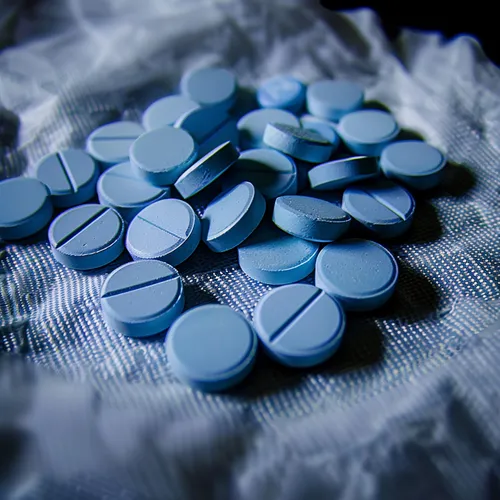It is extremely important to understand drug testing cut-off levels when considering the results from drug testing. The cut-off level is a breakpoint or threshold that has been predetermined, which is the measurement that will determine if a drug test has a positive or negative result.
This resulting measurement is expressed as a concentration of nanograms per millilitres (ng/mL). A nanogram is an extremely small amount, one billionth of a gram to be exact, and a millilitre is roughly equal to1/30 amount of fluid.
What Determines Cut-Off Levels?
For the majority of drugs of abuse, cut-off levels have been determined to be at the lowest possible level when being tested, while at the same time maintaining the integrity of the test. By setting the testing level low, it makes the window for optimal detection of screening for drugs, or drug metabolites, as large as possible.
What Are Benzodiazepines Drug Test Cut-Off Levels?
Depending on the test type that is being used, benzodiazepine drug tests will have various cut-off levels. In the workplace at the present time, drug testing for benzodiazepines usually takes on one of two forms; the saliva drug test or a urine drug test. The cut-off level for the saliva drug test is considerably lower than that of the urine drug test.
Benzodiazepines Cut-Off Levels When A Urine Drug Test Is Used
Normally, when a urine drug test is used, 300 ng/ml of benzodiazepines is the cut-off level. Within the UK this cut-off level is the standard, and likewise, when the urine drug test is used in the majority of workplace settings.
All of our urine drug test kits use the same 300 ng/ml cut-off level. This is true of our drug test kits, which only test for benzodiazepines, along with our drug test kits that are multi-parameter. Included in this would be our popular test kits: 10 drug, 7 drug and 5 drug.
Benzodiazepines have a detection window, when this drug test is used, of 3 to 5 days after the drug was last used.
Benzodiazepines Cut-Off Levels When A Saliva Drug Test Is Used
The cut-off level for benzodiazepines is considerably lower for a saliva drug test when compared to a urine drug test. The detection window for the saliva drug test is likewise considerably smaller; normally this detection window is only around 24 hours. It’s recommended using the benzodiazepines saliva drug test when the circumstances indicate there may be impairment currently present or when the monitoring of recent drug usage is needed.
The lower cut-off level for benzodiazepines is usually 10 ng/ml for a saliva drug test. Our saliva drug test kits, both the 10 panel oral drug test kit and the 7 panel oral drug test kit, use this as their standard.
Benzodiazepine Use In The UK
Benzodiazepines are used medicinally as tranquilisers, muscle relaxants, sleep inducers and to prevent seizures. Some of the most commonly prescribed benzodiazepines in the UK are diazepam (Valium), temazepam, nitrazepam and lorazepam (Ativan).
Although beneficial for many medical conditions, benzodiazepines do carry risks of dependence and withdrawal symptoms. It’s estimated that around 1 million people in the UK are dependent on benzodiazepines and related Z-drugs. Many individuals develop benzodiazepine dependence through initial medical prescriptions that continue long-term.
However, benzodiazepines are also used recreationally without prescriptions to achieve intoxicating effects. Some benzodiazepines enhance the effects of other recreational substances like alcohol or stimulants. When combined with other central nervous system depressants, benzodiazepines can increase the risks of overdose.
The rates of benzodiazepine dependence and recreational use have increased dramatically since 2000. This had led to more concern over misuse and dependence in the UK. As a result, guidelines recommend short-term benzodiazepine prescriptions generally not exceeding 2-4 weeks.
Reasons For Benzodiazepine Drug Testing
With rising benzodiazepine utilisation and associated risks of misuse, employers and medical professionals have valid reasons to test for these medications. Common situations where benzodiazepine drug tests may be administered include:
- Workplace testing to identify safety risks and support employees
- Testing after accidents or near misses to determine if benzodiazepines were a factor
- Monitoring patients on benzodiazepine prescriptions for compliance
- Screening patients with dependence issues entering treatment programmes
- Testing to identify benzodiazepine use disorders and support treatment
Understanding benzodiazepine cutoff levels in these drug tests ensures accurate interpretation of results.
Impact Of Benzodiazepines On Workplace Safety
Benzodiazepines can significantly affect workplace safety, especially in jobs requiring alertness and quick reflexes. These drugs slow down the central nervous system, potentially impairing judgement, coordination, and reaction time.
For instance, a forklift operator under the influence of benzodiazepines might misjudge distances or react too slowly to avoid accidents. Similarly, a nurse working night shifts while taking sleep-inducing benzodiazepines could make critical medication errors.
It’s not just about illegal use either. Even prescribed benzodiazepines can pose risks if not managed properly. An employee starting a new anxiety medication might experience unexpected drowsiness or dizziness, endangering themselves and others.
That’s why many companies include benzodiazepines in their drug testing panels. It’s not about policing personal health choices, but ensuring a safe work environment for everyone. By understanding benzodiazepine cut-off levels and detection windows, employers can make informed decisions about workplace safety while respecting employees’ medical needs.
Remember, if you’re prescribed benzodiazepines, always discuss potential work-related impacts with your doctor and employer. There might be safer alternatives or accommodations available to keep you and your colleagues safe on the job.
Detection Windows
Benzodiazepines have a detection window, when the urine drug test is used, of 3 to 5 days after the drug was last used.
The detection window for the saliva drug test is much shorter, normally around 24 hours. This makes it good for detecting recent or current impairment.
Photo Credit: “Benzos” by Anthony Cunningham for Zoom Testing
Zoom Testing is a leading UK drug testing company and a supplier of Drug Test Kits.





